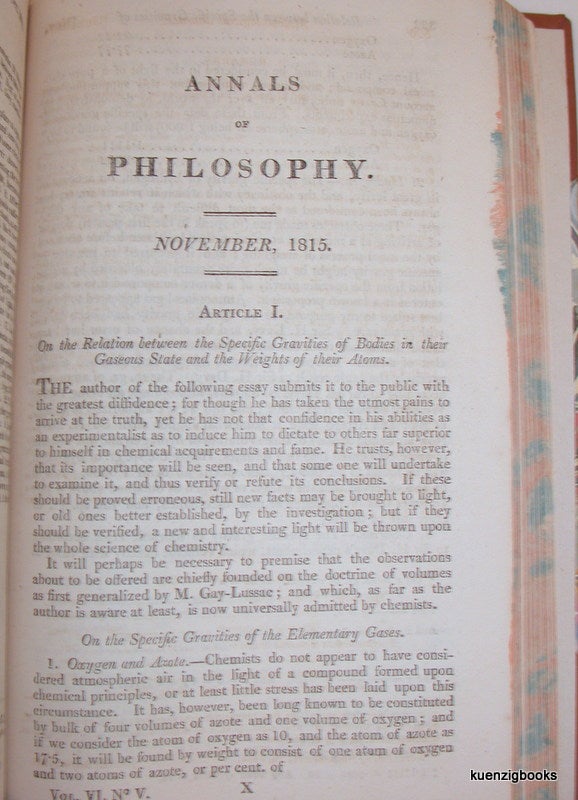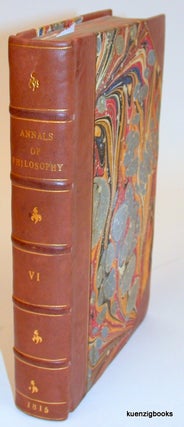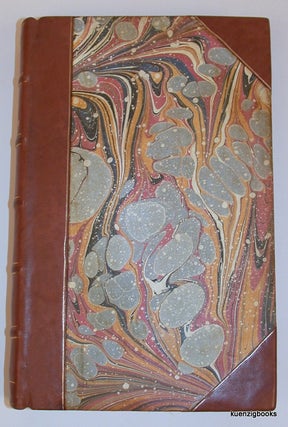On the Relation between the Specific Gravities of Bodies in their Gaseous State and the Weights of their Atoms
London: Baldwin, Cradock and Joy 1815. First Edition. vii, [1], 479, [1] pp. Modern 3/4 leather over marbled boards with new endpapers. This important paper by Prout is on pages 321-330 and is unsigned (Prout's authorship was later revealed by chemist Thomas Thomson). In: Annals of Philosophy, Vol. VI, July to December 1815 (entire volume offered). Near Fine. Boards. [18453]
In this important paper Prout "calculated that the atomic weights of all elements were integral when the atomic weight of hydrogen was taken as unity. In a correction (1816) he added that hydrogen might be the primary matter from which all other 'elements' were formed...the two hypotheses, of integral atomic weights and of the unity of matter, became known ambiguously and singularly as Prout's hypothesis. It was a continuous source of inspiration to chemists and physicists until the work of F. W. Aston on isotopes in the 1920s." (DSB 11&12, p173).
Prout's work, first published here, was eventually discussed in “Chemistry, Meteorology, and the Function of Digestion considered with Reference to Natural Theology, London: Pickering, 1834 (Neville Historical Chemical Collection, Vol 2, p 344)
ITEM SOLD




